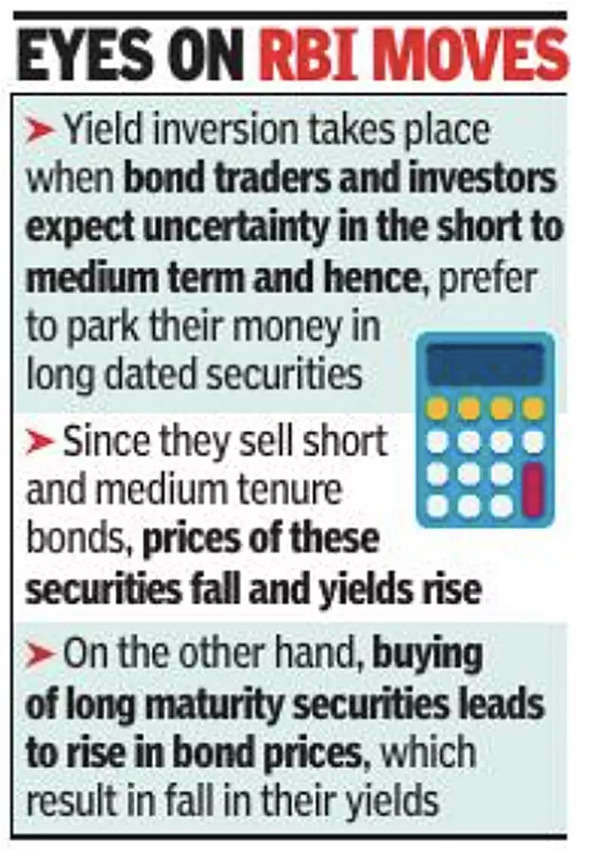Rate hike uncertainty leads to govt bond yield inversion

[ad_1]
On Tuesday, yield on the current 10-year G-sec bonds of 2033 maturity closed at 7.36%. At the same time, the most-traded 2032 gilt (the recently retired 10-year gilt) and the one that would mature in 2052 both closed at 7.39%.

In the short run, yield on 30-year bonds may fall below the 10-year one, bond market players said. In market parlance, this is called yield inversion, where the returns on longer tenure papers fall below papers with short or medium tenures. This is one of the widely-tracked indicators by economists and market strategists about an incoming recession in developed countries.
A yield inversion takes place when bond traders and investors expect uncertainty in the short to medium term and hence, prefer to park their money in long dated securities. Since they prefer to sell short and medium tenure bonds, the prices of these securities fall and yields rise. On the other hand, the buying of long maturity securities leads to rise in bond prices, which result in fall in yields.
With strong economic data coming out from the US, and India’s retail inflation in January showing an uptrend again, the RBI may be hard pressed to raise rates, economists and fund managers said. The recent rate-related uncertainty also led to a Rs 2,409-crore devolvement of 10-year G-sec bonds in Friday’s auction, the first such incident in 2023, RBI data showed.
According to economists, the recent surge in US yield against the backdrop of strong economic data enhances the probability of multiple rate hikes by the US Federal Reserve. In response to that as there is a higher likelihood that the RBI may hike its repo rate further with recent surge in CPI (retail inflation) and lower to middle end of the yield curve having very little demand.
In addition to the rate uncertainty related to buying of bonds with long maturity, a Budget proposal to abolish tax exemptions for maturity proceeds for high-premium insurance products from FY24 has led to additional demand for these papers. The combined impact has eliminated the premium in yields between 30-year and 10-year gilts. “With recent upside surprises in both global and Indian inflation rate, Bond market has assigned a higher probability of further hike in the RBI repo rate, lowering demand for the 10-year bond in the near term,” said Siddhartha Sanyal, chief economist & head of research at Bandhan Bank. “However, long-dated bonds enjoy strong investor demand at present as certain tax exemptions will cease to exist after March 2023.”
Earlier this month after the RBI’s rate setting committee raised the repo rate by 25 basis points (100bps = 1 percentage point), there were expectations of a pause in rate hikes. However, with a series of economic data since then, both in the domestic and US markets, have mostly diluted such hopes, bond players said.
In the US, since last July, yield inversion has been witnessed between 2-year and 10-year bonds, and economists and strategists have been expecting a recession in the world’s largest economy.
#Rate #hike #uncertainty #leads #govt #bond #yield #inversion





